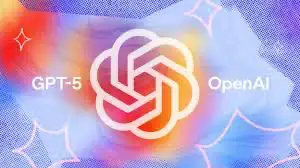How GPT-5 Is Changing the Game in Cybersecurity

PenligentAI · 12, August 2025
Over the past few years, AI has gone from hype to reality in security. And OpenAI’s newest large model, GPT-5, is not just an incremental upgrade—it’s a serious shift in how penetration testing can be done.
Compared to traditional scripts and scanning tools, GPT-5 can not only run tests automatically, but also map out complex attack chains and predict where your systems might be most vulnerable. This is pushing AI penetration testing into a whole new level of intelligence.

What GPT-5 Brings to Pentesting
Recon and Asset Discovery
GPT-5 can digest huge amounts of network data—finding subdomains, running port scans, fingerprinting tech stacks—and then automatically produce ready-to-run commands and scripts.
Example: Based on a target’s site structure, GPT-5 can generate the optimal nmap, ffuf, or nuclei commands, run them, and turn raw results into plain-language summaries.
Attack Chain Reasoning
Earlier models would just stack results together. GPT-5 goes further—using frameworks like MITRE ATT&CK to link multiple low- and medium-risk vulnerabilities into a single, high-impact exploit chain.
For example, if it spots directory traversal combined with weak admin credentials, it can map the fastest attack path and produce a working proof-of-concept exploit.
Automated Social Engineering & Phishing Simulations
In authorized testing scenarios, GPT-5 can create convincing phishing emails or chat scripts, adjusting tactics in real time based on how targets respond—helping teams measure their human-layer defenses.
Vulnerability Verification & Reporting
Instead of a human writing the final report, GPT-5 can automatically verify findings and produce a CWE / CVSS-compliant report—complete with technical details, reproduction steps, and remediation advice.
Why GPT-5 Makes AI Pentesting Smarter
- Context-Aware Analysis: Understands both technical details and business logic, cutting false positives and missed risks.
- Adaptive Strategy: Adjusts its attack plan in real time based on testing feedback.
- Cross-Modal Insight: Reads code, config files, API responses, and logs to find hidden issues scanners miss.

Where Penligent.ai Fits In
In real projects, a platform like Penligent.ai can plug directly into GPT-5’s reasoning power, letting security teams:
- Generate a full pentest SOP and execute it in one click
- Analyze scan results and plan the next move automatically
- Continuously monitor targets for signs of zero-day vulnerabilities
This takes GPT-5 from “helpful assistant” to “semi-autonomous red team operator,” massively boosting both speed and coverage.
Drawing the Security Line
Even with all its power, GPT-5 has to be handled carefully:
- Only test within authorized scope
- Review any generated attack commands before running them in production
- Use audit trails and safeguards to prevent prompt injection or model manipulation
The Pentesting Imperative in 2025
Here’s the reality: The moment you integrate an AI Agent like GPT-5 into your security stack, you’ve opened a new attack surface. And unlike static tools, AI doesn’t always behave predictably.
That’s why continuous penetration testing—ideally automated and AI-assisted—is now non-negotiable. You need to know how GPT-5 responds to unexpected inputs, whether it can be tricked into revealing sensitive data, or if it might execute something destructive when given the wrong nudge.
If you wouldn’t launch a new web app without a security audit, you definitely shouldn’t unleash GPT-5 without putting it through a serious, hands-on pentest.
GPT-5 is pushing AI penetration testing from “automated” to “intelligent.” Paired with platforms like Penligent.ai, it’s not just a tool—it’s a force multiplier for security teams. But in 2025, the teams that win won’t just be the ones who adopt GPT-5; they’ll be the ones who test it, challenge it, and secure it before the attackers do.